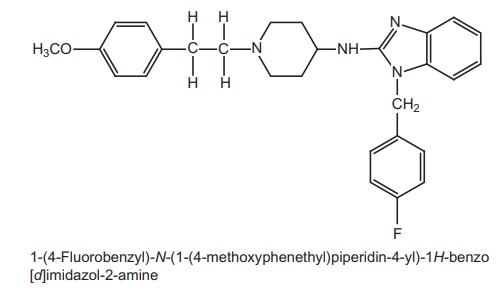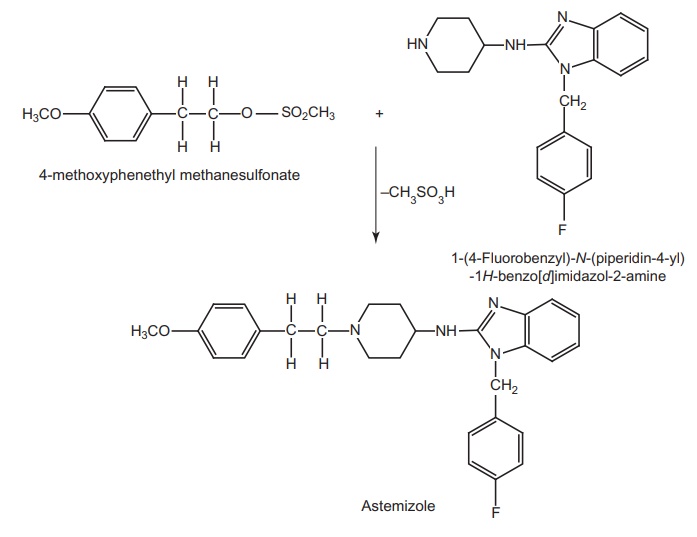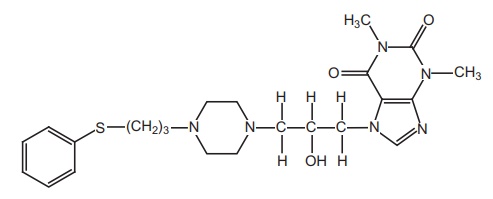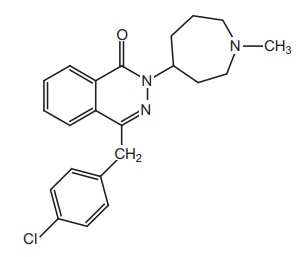H1-Antagonists with nonclassical structure
| Home | | Medicinal Chemistry |Chapter: Medicinal Chemistry : Antihistamines
H1-Antagonists with nonclassical structure : 1. Astemizole (Histalong) 2. Tazifylline 3. Azelastine
SYNTHESIS AND DRUG PROFILE
H1-Antagonists with nonclassical
structure
1. Astemizole (Histalong)

Synthesis

Properties and uses: Astemizole is a white powder, practically
insoluble in water, soluble in methylene chloride, methanol, and in alcohol.
The drug is found to be more potent and possesses longer duration of action
than the terfenadine. It has a slow onset, is long acting, and nonsedating
piperidine antihistaminic having practically little anticholinergic activity.
It is indicated for seasonal allergic rhinitis and chronic utricaria. It is an
effective antiallergic agent giving protection against asthma, hay fever, and
chronic urticaria. It does not exhibit any noticeable CNS activity.
Assay: Dissolve the sample in a mixture of anhydrous acetic acid and
methyl ethyl ketone, and titrate against 0.1 M perchloric acid using
naphtholbenzein solution as an indicator.
Dose: Usual dose is 10 mg (oral) increased, if required, to 30 mg per
day for upto 7 days 1 h before meals. It is not recommended for children below
6 years.
2. Tazifylline

Properties and uses: Tazifylline is proved for its successful antiallergic
activity, with no significant occurrence of side effects (dryness of mouth and
sedation) and long duration of action.
3. Azelastine

Properties and uses: It is a racemic mixture of white crystals,
soluble in water, methanol or propylene glycol, but only slightly soluble in
ethanol, octanol, or glycerine. It combines potent H1-receptor antagonism with
a negligible anticholinergic and moderate serotonergic activity. It is used in
the treatment of itching of the eyes associated with allergic conditions.
Related Topics
